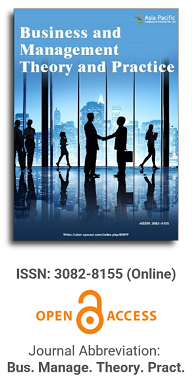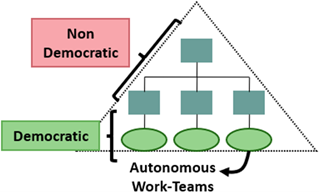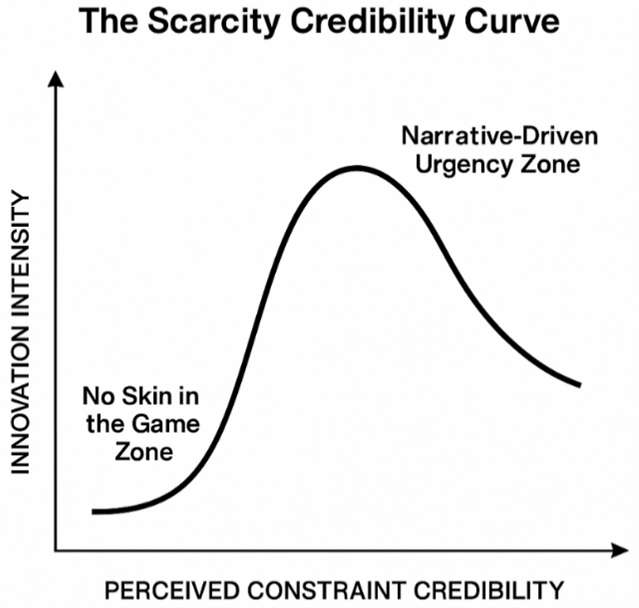
Asia Pacific Academy of Science Pte. Ltd. (APACSCI) specializes in international journal publishing. APACSCI adopts the open access publishing model and provides an important communication bridge for academic groups whose interest fields include engineering, technology, medicine, computer, mathematics, agriculture and forestry, and environment.


Competency-driven decision making in data-centric offshoring: A fuzzy analytical hierarchy approach
Vol 2, Issue 1, 2025
Download PDF
Abstract
This research addresses a gap in offshore outsourcing studies by examining service providers’ competencies in Big Data Analytics as a Service (BDAaaS), Business Process Outsourcing (BPO), and Artificial Intelligence as a Service (AIaaS). The accelerating evolution of AI and data-centric industries necessitates this research to elucidate the essential competencies for achieving excellence in these domains. To overcome subjectivity in evaluating qualitative attributes, the fuzzy Analytic Hierarchy Process (AHP) is employed to assess the significance of service provider capabilities. The findings reveal variations in the importance of provider capabilities across BDAaaS, BPO, and AIaaS sectors. These results align with the strategic goals of many Indian IT outsourcing firms. By highlighting the differing competency requirements in these emerging cloud-based services, the study contributes valuable insights for service providers looking to enhance their competitive position in the global market. This research provides a foundation for future studies on provider competencies in the evolving landscape of data-driven cloud services.
Keywords
References
- Ardagna CA, Ceravolo P, Damiani E. Big data analytics as-a-service: Issues and challenges. In: Proceedings of 2016 IEEE International Conference on Big Data (Big Data); 5–8 December 2016; Washington, DC, USA. pp. 3638-3644.
- Philip Chen CL, Zhang CY. Data-intensive applications, challenges, techniques and technologies: A survey on Big Data. Information Sciences. 2014; 275: 314-347. doi: 10.1016/j.ins.2014.01.015
- Janssen M, Mäntymäki M, Hidders J, et al. Open and Big Data Management and Innovation. Springer International Publishing; 2015.
- Brudenall P. Technology and Offshore Outsourcing Strategies. Palgrave Macmillan UK; 2005.
- Cobbe J, Singh J. Artificial intelligence as a service: Legal responsibilities, liabilities, and policy challenges. Computer Law & Security Review. 2021; 42: 105573. doi: 10.1016/j.clsr.2021.105573
- Mukherjee D, Gaur AS, Datta A. Creating value through offshore outsourcing: An integrative framework. Journal of International Management. 2013; 19(4): 377-389. doi: 10.1016/j.intman.2013.03.015
- Reitzig M, Wagner S. The hidden costs of outsourcing: evidence from patent data. Strategic Management Journal. 2010; 31(11): 1183-1201. doi: 10.1002/smj.852
- Jensen PDØ, Pedersen T. Offshoring and international competitiveness: antecedents of offshoring advanced tasks. Journal of the Academy of Marketing Science. 2011; 40(2): 313-328. doi: 10.1007/s11747-011-0286-x
- Mani D, Srikanth K, Bharadwaj A. Efficacy of R&D Work in Offshore Captive Centers: An Empirical Study of Task Characteristics, Coordination Mechanisms, and Performance. Information Systems Research. 2014; 25(4): 846-864. doi: 10.1287/isre.2014.0552
- Charles M, Benson Ochieng S. Strategic Outsourcing and Firm Performance: A Review of Literature. International Journal of Social Science and Humanities Research (IJSSHR). 2023; 1(1): 20-29. doi: 10.61108/ijsshr.v1i1.5
- Javalgi RG, Whipple TW, Ghosh AK, et al. Market orientation, strategic flexibility, and performance: implications for services providers. Journal of Services Marketing. 2005; 19(4): 212-221. doi: 10.1108/08876040510605244
- France RB, Kazmeier J, Breu R, et al. Model Driven Engineering Languages and Systems. Springer Berlin Heidelberg; 2012.
- Krishnan MS, Kellner MI. Measuring process consistency: implications for reducing software defects. IEEE Transactions on Software Engineering. 1999; 25(6): 800-815. doi: 10.1109/32.824401
- Cockburn A, Highsmith J. Agile software development, the people factor. Computer. 2001; 34(11): 131-133. doi: 10.1109/2.963450
- Andreolini M, Colajanni M, Nuccio M. Scalability of content-aware server switches for cluster-based Web information systems. World Wide Web Conference Committee. 2003: 200-208.
- Royce WW. Software project management: A unified framework. Addison-Wesley Professional; 1998.
- Lacity MC, Khan S, Yan A, et al. A Review of the it Outsourcing Empirical Literature and Future Research Directions. Journal of Information Technology. 2010; 25(4): 395-433. doi: 10.1057/jit.2010.21
- Owens DM, Khazanchi D. Software Quality Assurance. In: Kidd TT (editor), Handbook of Research on Technology Project Management, Planning, and Operations. IGI Global Scientific Publishing; 2009. pp. 242-260.
- Dhillon G, Backhouse J. Technical opinion: Information system security management in the new millennium. Communications of the ACM. 2000; 43(7): 125-128. doi: 10.1145/341852.341877
- Judge WQ, Naoumova I, Douglas T. Organizational capacity for change and firm performance in a transition economy. The International Journal of Human Resource Management. 2009; 20(8): 1737-1752. doi: 10.1080/09585190903087107
- Kumar V, Kumar U, Persaud A. Building Technological Capability Through Importing Technology: The Case of Indonesian Manufacturing Industry. The Journal of Technology Transfer. 1999; 81-96. doi: 10.1023/A:1007728921126
- Heisig P. Harmonisation of knowledge management—comparing 160 KM frameworks around the globe. Journal of Knowledge Management. 2009; 13(4): 4-31. doi: 10.1108/13673270910971798
- Mikalef P, Pappas IO, Krogstie J, et al. Big data analytics capabilities: a systematic literature review and research agenda. Information Systems and e-Business Management. 2017; 16(3): 547-578. doi: 10.1007/s10257-017-0362-y
- Chikofsky EJ, Cross JH. Reverse engineering and design recovery: a taxonomy. IEEE Software. 1990; 7(1): 13-17. doi: 10.1109/52.43044
- Hammer M. Reengineering work: Don’t automate, obliterate. Harvard Business Review. 1990: 104-112.
- Eriksson K, Johanson J, Majkgård A, et al. Experiential Knowledge and Costs in the Internationalization Process. Journal of International Business Studies. 1997; 28(2): 337-360. doi: 10.1057/palgrave.jibs.8490104
- Danneels E, Kleinschmidtb EJ. Product innovativeness from the firm’s perspective: Its dimensions and their relation with project selection and performance. Journal of Product Innovation Management. 2001; 18(6): 357-373. doi: 10.1111/1540-5885.1860357
- Teasley S, Covi L, Krishnan MS, et al. How does radical collocation help a team succeed? In: Proceedings of the 2000 ACM conference on Computer supported cooperative work; Philadelphia, Pennsylvania, USA. pp. 339–346.
- Goo, Kishore, Rao, et al. The Role of Service Level Agreements in Relational Management of Information Technology Outsourcing: An Empirical Study. MIS Quarterly. 2009; 33(1): 119. doi: 10.2307/20650281
- Paulraj A, Lado AA, Chen IJ. Inter‐organizational communication as a relational competency: Antecedents and performance outcomes in collaborative buyer–supplier relationships. Journal of Operations Management. 2007; 26(1): 45-64. doi: 10.1016/j.jom.2007.04.001
- Lange D, Lee PM, Dai Y. Organizational Reputation: A Review. Journal of Management. 2010; 37(1): 153-184. doi: 10.1177/0149206310390963
- Bao Y, Sheng S, Zhou KZ. Network-based market knowledge and product innovativeness. Marketing Letters. 2011; 23(1): 309-324. doi: 10.1007/s11002-011-9155-0
- Grant RM, Venzin M. Strategic and Organisational Challenges of Internationalisation in Financial Services. Long Range Planning. 2009; 42(5-6): 561-587. doi: 10.1016/j.lrp.2009.10.005
- Tseng SM. The effect of knowledge management capability and customer knowledge gaps on corporate performance. Journal of Enterprise Information Management. 2016; 29(1): 51-71. doi: 10.1108/jeim-03-2015-0021
- Payne A, Frow P. A Strategic Framework for Customer Relationship Management. Journal of Marketing. 2005; 69(4): 167-176. doi: 10.1509/jmkg.2005.69.4.167
- Saaty TL. Optimization by the Analytic Hierarchy Process. Defense Technical Information Center; 1979.
- Liu M, Zhu X, Chen Y, et al. Evaluation and design of dining room chair based on analytic hierarchy process (AHP) and fuzzy AHP. BioResources. 2023; 18(2): 2574-2588. doi: 10.15376/biores.18.2.2574-2588
- Dodevska Z, Radovanović S, Petrović A, et al. When Fairness Meets Consistency in AHP Pairwise Comparisons. Mathematics. 2023; 11(3): 604. doi: 10.3390/math11030604
- Boender CG. Multi-criteria decision analysis with fuzzy pairwise comparisons. Fuzzy Sets and Systems. 1989; 29(2): 133-143. doi: 10.1016/0165-0114(89)90187-5
- Shameem M, Kumar RR, Nadeem M, et al. Taxonomical classification of barriers for scaling agile methods in global software development environment using fuzzy analytic hierarchy process. Applied Soft Computing. 2020; 90: 106122. doi: 10.1016/j.asoc.2020.106122
- Abdullah AG, Shafii MA, Pramuditya S, et al. Multi-criteria decision making for nuclear power plant selection using fuzzy AHP: Evidence from Indonesia. Energy and AI. 2023; 14: 100263. doi: 10.1016/j.egyai.2023.100263
- Chan LK, Kao HP, Wu ML. Rating the importance of customer needs in quality function deployment by fuzzy and entropy methods. International Journal of Production Research. 1999; 37(11): 2499-2518. doi: 10.1080/002075499190635
- Güngör Z, Serhadlıoğlu G, Kesen SE. A fuzzy AHP approach to personnel selection problem. Applied Soft Computing. 2009; 9(2): 641-646. doi: 10.1016/j.asoc.2008.09.003
- Guttorp P. Fuzzy Mathematical Models in Engineering and Management Science. Technometrics. 1990; 32(2): 238-238. doi: 10.1080/00401706.1990.10484661
- Zhu AX, Band LE, Dutton B, et al. Automated soil inference under fuzzy logic. Ecological Modelling. 1996; 90(2): 123-145. doi: 10.1016/0304-3800(95)00161-1
- Millet I, Saaty T. On the relativity of relative measures-accommodating both rank preservation and rank reversals in the AHP. European Journal of Operational Research. 2000; 121(1): 205-212. doi: 10.1016/S0377-2217(99)00040-5
- Nepal B, Yadav OP, Murat A. A fuzzy-AHP approach to prioritization of CS attributes in target planning for automotive product development. Expert Systems with Applications. 2010; 37(10): 6775-6786. doi: 10.1016/j.eswa.2010.03.048
- Kwong CK, Bai H. A fuzzy AHP approach to the determination of importance weights of customer requirements in quality function deployment. Journal of Intelligent Manufacturing. 2002; 13: 367-377. doi: 10.1023/A:1019984626631
- Promentilla MAB, Furuichi T, Ishii K, et al. A Prioritization Method Using Hierarchical Network Model For Multi-Criteria Evaluation Of Remedial Countermeasures. Doboku Gakkai Ronbunshuu G. 2006; 62(3): 308-324. doi: 10.2208/jscejg.62.308
- Barney J. Firm Resources and Sustained Competitive Advantage. Journal of Management. 1991; 17(1): 99-120. doi: 10.1177/014920639101700108
- Teece DJ, Pisano G, Shuen A. Dynamic capabilities and strategic management. Strategic Management Journal. 1997: 509-533. doi: 10.1002/(SICI)1097-0266(199708)18:73.0.CO;2-Z
- Eisenhardt KM, Martin JA. Dynamic capabilities: What are they? Strategic Management Journal. 2000: 1105-1121. doi: 10.1002/1097-0266(200010/11)21:10/113.0.CO;2-E
- O’Reilly CA, Tushman ML. Ambidexterity as a dynamic capability: Resolving the innovator’s dilemma. Research in Organizational Behavior. 2008; 28: 185-206. doi: 10.1016/j.riob.2008.06.002
- Grant RM. Toward a knowledge‐based theory of the firm. Strategic Management Journal. 1996; 17(S2): 109-122. doi: 10.1002/smj.4250171110
- Cohen WM, Levinthal DA. Absorptive Capacity: A New Perspective on Learning and Innovation. Administrative Science Quarterly. 1990; 35(1): 128. doi: 10.2307/2393553
- DiMaggio PJ, Powell WW. The Iron Cage Revisited: Institutional Isomorphism and Collective Rationality in Organizational Fields. American Sociological Review. 1983; 48(2): 147. doi: 10.2307/2095101
- Suchman MC. Managing Legitimacy: Strategic and Institutional Approaches. The Academy of Management Review. 1995; 20(3): 571. doi: 10.2307/258788
- Granovetter M. Economic Action and Social Structure: The Problem of Embeddedness. American Journal of Sociology. 1985; 91(3): 481-510. doi: 10.1086/228311
- Nahapiet J, Ghoshal S. Social Capital, Intellectual Capital, and the Organizational Advantage. The Academy of Management Review. 1998; 23(2): 242. doi: 10.2307/259373
Supporting Agencies
Copyright (c) 2025 Author(s)
License URL: https://creativecommons.org/licenses/by/4.0/

This site is licensed under a Creative Commons Attribution 4.0 International License (CC BY 4.0).

Macau University of Science and Technology, Macau




.jpg)
.jpg)
